When the sun is shining and the temperature starts to rise just to the point of being uncomfortably hot, vacation season officially begins. Whether you own a getaway waterfront home or are renting one out for the summer, these places are the go-to destinations to relax, stay cool, and have fun with the family after being cooped up and cold all winter long. That being said, while may be the ultimate destination goal for the warmer weather months, they come with their own unique set of problems. Issues such as mold in a beach house or other waterfront properties can turn these vacation experiences into a health nightmare.
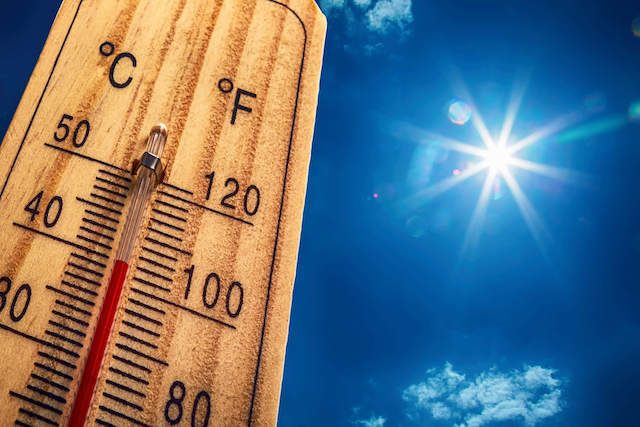
As many vacation homeowners or renters know, that telltale musty odor pops up far too often after opening up the space for the season or as a constant presence inside the house. Just because it’s common, though, doesn’t mean that it should be an accepted fact of life. It’s kind of like smoking back in the day- was it massively popular? Yes, but now we know that it definitely shouldn’t be because it is terrible for our health.
Mold in a beach house or other waterfront properties is the exact same situation. That’s why it’s important to know how to prevent this fungus among us from popping up in these getaway destinations and know what to look for, whether you’re the homeowner or just a guest passing through.
No one wants their vacation wreaked by the adverse health effects of mold exposure.
Here’s what you need to know.
Why Are Waterfront Properties Prone to Mold?
Glad you asked! Knowing why mold in a beach house or other waterfront properties is so common can help you better understand how to avoid it from occurring.
But First, Mold
Mold is a type of fungus with over 100,000 species identified so far. Each species reproduces by creating microscopic spores and releasing them into the surrounding environment.¹’² This is one of the main reasons why any and all mold growth should be handled the same way: quickly and correctly.
These tiny little particles will float wherever the wind takes them and land on whatever surface they come in contact with. The key thing to understand here is that these little particles are non-living. It’s similar to how a plant creates seeds. Those seeds need certain elements before they will transition into a living plant.
Similarly, spores will remain spores until they land on a surface with the components they need to start growing. Thanks to their hardy nature, spores only need two main things to transition into a living mold colony.
These elements are:³
- Food
- Moisture
If these are present on a surface for 24-48 hours, that mold spore will put down roots called hyphae and begin to grow. Once established, it will start that reproductive cycle all over again, releasing more spores into that indoor space.
Mold in a Beach House or Other Waterfront Properties
Going off of the information above, mold in a beach house or other waterfront properties can happen fairly easily.
When it comes to food, there are a plethora of options. Skin cells, cloth furniture, plants, and other organic matter either floating around or hanging out offer a great option. Components of the home itself, such as wood, carpet, drywall, wallpaper, and glue also act as an edible buffet for a lucky mold spore.
That leaves moisture as the main ingredient for life. With water in the name of these properties, that’s a pretty easy component to come by if measures aren’t taken to mitigate it.
A few common watery events that can lead to mold in a beach house or other waterfront properties include:
- Constant high humidity: Many species of mold can survive and thrive in high humidity and since they’re located right beside bodies of water, this is in abundance. If the house isn’t kept dry, mold growth can pop up.
- Coming and going after water activities: Between the wet footprints, soaked bathing suits, damp towels, and drenched toys/games/accessories/etc these can bring lots of moisture into a home.
- Left for long periods of time: This is a problem for several reasons. A storm could punch a hole in the roof, cold weather can lead to a pipe bursting, lack of airflow can trap humidity, and a lengthy list of other issues, all of which allow for mold to grow. And, since no one is at the home, this growth can be left unresolved for long periods of time, creating further contamination.
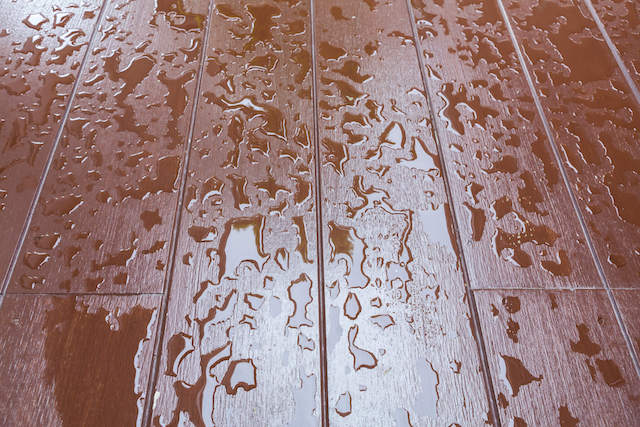
If any of the examples above occur, it leaves the door wide open for mold in a beach house or other waterfront properties to develop and start causing issues.
The Problem with Mold in a Beach House or Other Waterfront Properties
As soon as a colony of mold settles in, it begins to release those spores into the surrounding environment. Some species of mold also produce microscopic toxins and release these as well.⁴
The issue is that if growth occurs indoors, all of these particles do not have the entire world to disperse through. Thanks to modern building practices pushing for net-zero energy efficiency, there’s very little airflow between indoor and outdoor environments, meaning that a majority of these particles remain trapped within the walls of the home. The longer that colony is alive, the more spores (and potentially toxins) it will release and the higher the volume of particles there will be in the home.
All of these particles lead to contaminated surfaces throughout the home as they can ride the air current anywhere and everywhere and it tanks the indoor air quality.
Tying In Health
The issue with this phenomenon is the impact it can have on those who are exposed to this indoor contamination. A common misconception is that since mold is everywhere, it’s not a problem for our health. That is not true.
Sure, there are mold particles all over the world and it’s impossible to avoid encountering them. But, they have the entire world to blow around, meaning that you actually only bump into a few throughout the day. When you’re sitting inside of a home with a mold problem, it’s like sitting inside of a contaminated bubble. All of the air you breathe in introduce these particles into your body. Considering that the average person breathes in 20,000 breathes a day, that’s an entirely different level of exposure. And, that’s not even considering all of the contaminated surfaces being touched as well.
The ability of spores and toxins to cause problems is largely based on the size of these particles. Thanks to their small size, they’re able to be inhaled, ingested, and absorbed into the body.⁵ Some of the particles are so small that once they make it inside, they blow right past the lungs and straight into the bloodstream.
Again, we encounter these particles every day so the body is used to dealing with these microscopic particles when they manage to get inside of our bodies. Once it encounters them, it will tag them as foreign invaders and deploy the immune system to get rid of them ASAP. Mold in a beach house or other waterfront properties (or any indoor environment) isn’t quite as easy as a task as this typical encounter.
Instead of a couple of particles throughout the day, the body is then faced with eliminating an army of spores, mycotoxins, and mold fragments every time you’re in the house. To make matters more unhealthy, bacteria thrive in the same conditions as mold and can often be found growing right alongside a colony, adding to the particle party entering your body. The immune system will attempt to keep up, but it can become overrun and/or malfunction leading to a long list of chronic symptoms and related autoimmune conditions such as Chronic Fatigue Syndrome, Aspergillosis, or Lyme disease.
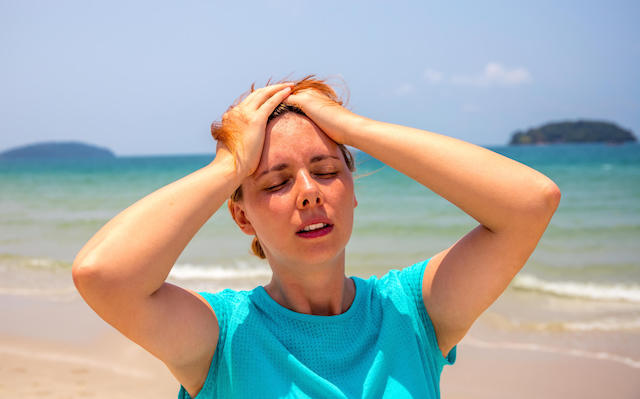
Some common symptoms of mold exposure include:
- Coughing
- Headaches and migraines
- Respiratory issues
- Brain fog
- Chronic fatigue
- Hair loss
- Rashes
- Muscle and joint pain
- Digestive problems
- Hormonal imbalances
- Mood swings
- Anxiety and/or depression
The tricky thing with exposure, though, is that no two people respond the same way.⁶’⁷’⁸’⁹’¹⁰ One person dealing with mold in a beach house or other waterfront properties may experience the occasional runny nose and headache while another individual develops 15 symptoms and an autoimmune condition. Researchers are still attempting to determine how mold exposure affects the body and why there’s such a range in reactions, but it’s a difficult subject to nail down. Factors such as genetics, length of exposure, species of mold, presence of mycotoxins, presence of bacteria, and immune systems status all play a role.
Any potential symptom is reason enough to actively work to avoid this fungus from growing indoors.
Preventing Mold in a Beach House or Other Waterfront Properties
Avoiding indoor mold growth is all about eliminating the components needed for growth and removing any spores that managed to blow inside. With their small size, it’s inevitable that they’ll come inside and with the lack of airflow between indoor and outdoor environments, it’s up to us to take them right back out. The more spores there are in the home, the higher the chance that they’ll get lucky and stumble on a habitable surface.
Here are the top 15 steps to prevent mold in a beach house or other waterfront properties.
1. Remove wet clothing as soon as possible: Get these washed and dried as soon as possible.
2. Hang out all equipment and items used during water-filled days to dry: Mold can grow in 24-48 hours so it’s important to help the dry quickly.
3. Deep clean often: This not only removed contaminants from the home but also small particles like skin cells and other organic matter that they can eat.
4. Maintain indoor humidity levels between 35-50%¹¹: This can be accomplished by:
- Focusing on airflow in bathrooms and kitchens by turning on exhaust fans and cracking doors when they're in use. If they don’t have exhaust fans, it’s a good idea to install them and ensure they vent outside of the home.
- Keep windows and doors closed on humid days.
- Installing a whole-home dehumidifier or smaller units throughout the home can help remove excess moisture for homes that are struggling to maintain low humidity.
- Using a humidity detection device can help monitor levels, especially during times when no one is at the home.
5. Scheduling home maintenance tasks: This includes tasks like cleaning out gutter systems and checking to make sure they’re operating correctly, making bi-annual HVAC service appointments to assess the machine, and maintaining appliances within the home to make sure that they’re in good working order and are less likely to leak or harbor water.
6. Repair leaks ASAP: The sooner a problem is resolved, the lower the opportunity for mold growth. It also reduces the amount of contamination present for a colony that managed to sneak in. Using a leak detection device is a great idea, especially if the home sits unoccupied for long periods of time. Appliances breaking, furnaces malfunctioning, or roof damage can all create water damage nightmares, especially when the home is sitting unoccupied.
7. Ensure proper ventilation in the attic: Attics are one of the most common places for mold in a beach house or other waterfront properties. Frankly, they’re a top contender for mold hotspots for homes in general. Ensuring that they have proper ventilation on top of regularly checking for leaks can help keep these spaces free from mold growth.
8. Make sure the windows are properly installed: Windows are another hotspot for mold growth. Make sure that these are installed properly to prevent outside moisture from making its way inside the home and keep a close eye out for any issues.
9. Set up flood controls in the basement: Since these homes are close to bodies of water and typically on relatively flat land, they’re prone to basement flooding. Make sure you have all the tools you’ll need to dry out the space as well as proper drainage pathways in case of a problem. 1
10. Ensure gutters are correctly installed: These systems are designed to channel water away from the home, but only if they’re positioned properly. Otherwise, they’ll allow water to build up along the foundation of the home, opening up the door to structural issues and creating a habitable environment for mold.
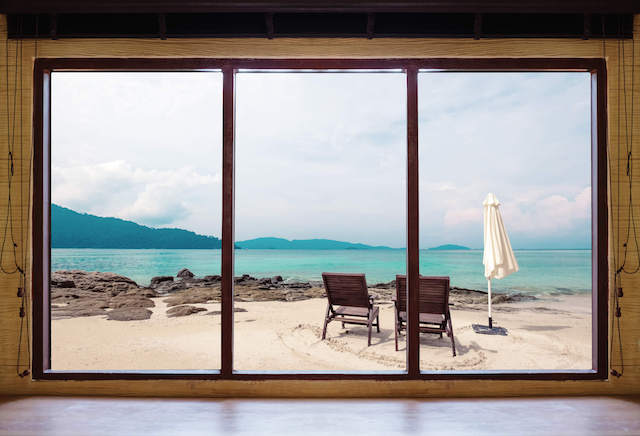
10. Focus on keeping the house dry: This includes wiping up any pooled water, hanging up towels and bath mats after using bathrooms, and keeping windows closed during rainy days.
12. Avoid carpeting: These can easily trap moisture and mold spores, creating a perfect environment for a colony to develop.
13. Consider air purifiers: The more particles that can be removed from an indoor environment, the better. Air purifiers can help remove not only mold spores, but also bacteria, mycotoxins, and edible options they can use for growth.
14. Set the home up for success when leaving: Before closing up shop for the year, drain all of the pipes and turn them off so they don't freeze. A good idea is to ask someone to drop in and check on the home every so often to make sure there aren’t any issues.
15. Make sure that the ground slopes away from the foundation: This helps carry any excess water away during rain or snow storms.
When in doubt, contact an expert to get their opinion on steps you can take to prevent mold in a beach house or other waterfront properties from happening to you. Not only are these situations costly, but they aren’t exactly going to provide the health benefits you were probably looking for when embarking on a vacation.
HomeCleanse offers a Home Wellness Inspection designed to assess the interior and exterior of a home to pinpoint any issues that could potentially lead to water damage and problems down the line so that you can preemptively resolve them and avoid any issues.
How Do You Know if There’s Mold in a Beach House or Other Waterfront Property?
Even with all of the preventative measures listed above, mold growth can still pop up in a home- it’s a seriously determined little fungus. Knowing what to look for can help resolve the problem faster so that there’s less contamination and avoid exposure to this indoor contaminant. Whether you own the house or are stopping in for a few weeks, here are the best ways to determine if there’s a moldy issue.
Take a Look Around

Use a flashlight and look at every little area you can get to in the home. You’re not only looking for mold during the hunt but also water damage as well.
When it comes to visible mold, look for any discoloration or abnormalities. With so many species out there, mold can come in all sorts of colors, shapes, and textures, so look for any sort of abnormality. Some of the most common colors include green, white, grey, blue, red, black, brown, or the infamous pink. As for textures, they could be fuzzy, powdery, velvety, or slimy.
As for water damage, visible issues that indicate a moisture problem include coffee-like stains, discolored carpet, or bubbling and peeling paint/wallpaper. Condensation on windows can also point to a moisture and mold growth problem.
Some of the top areas to check for problems include:
- Basement
- Caulk/grout
- Kitchen appliances
- Washing machine
- Attic
- Carpet
- Windowsills
- The toilet tank
- HVAC system
Give the Home a Sniff
If you don’t find any visible mold, that doesn’t mean that there isn’t a problem. The growth could be in a hidden location like beneath insulation or it might be too small to be visible yet.
In this case, rely on your nose. Mold growth often creates a damp, musty, earthy smell due to the release of gases called microbial volatile organic compounds (MVOC).¹² If you smell this in the space, there’s a good chance that you’re dealing with mold in a beach house or other waterfront properties.
Stay in Tune With the Body
Just because you don’t see or smell a problem, doesn’t mean that there isn’t an issue. It’s also important to pay attention to the body. Have you or anyone in your family developed chronic symptoms over time that no doctor can pinpoint a root cause for? Have they flared up since you went into the home?
Our bodies are amazing warning systems that will let us know when something is wrong. If you start feeling unwell, those invisible particles could be wreaking havoc, causing your body to sound the alarm and push for you to get out of that situation. Always listen to your body when it’s saying, “Hey something is definitely not right here”
What to Do If You Find Mold in a Beach House or Other Waterfront Property?
If you discover a moldy issue, it needs to be handled quickly and properly. The longer it’s there’ the more contamination there will be around the space and throughout the home. And, the more spores there are in a home, the higher the chances of another mold problem developing elsewhere.
If you’re renting the space and find mold, alert the property owner ASAP and spend as little time as possible in that indoor space. Belongings can be contaminated with particles, and you definitely do not want all of your vacation items to get covered in spores and mycotoxins.
For homeowners, there are two options for dealing with mold in a beach house or other waterfront property. If it’s a small issue such as grout, make sure you have the right cleaning tools and proper procedures before getting to work. Also keep in mind that if the mold grows right back or the smell/health reactions continue, there could be a bigger issue elsewhere.
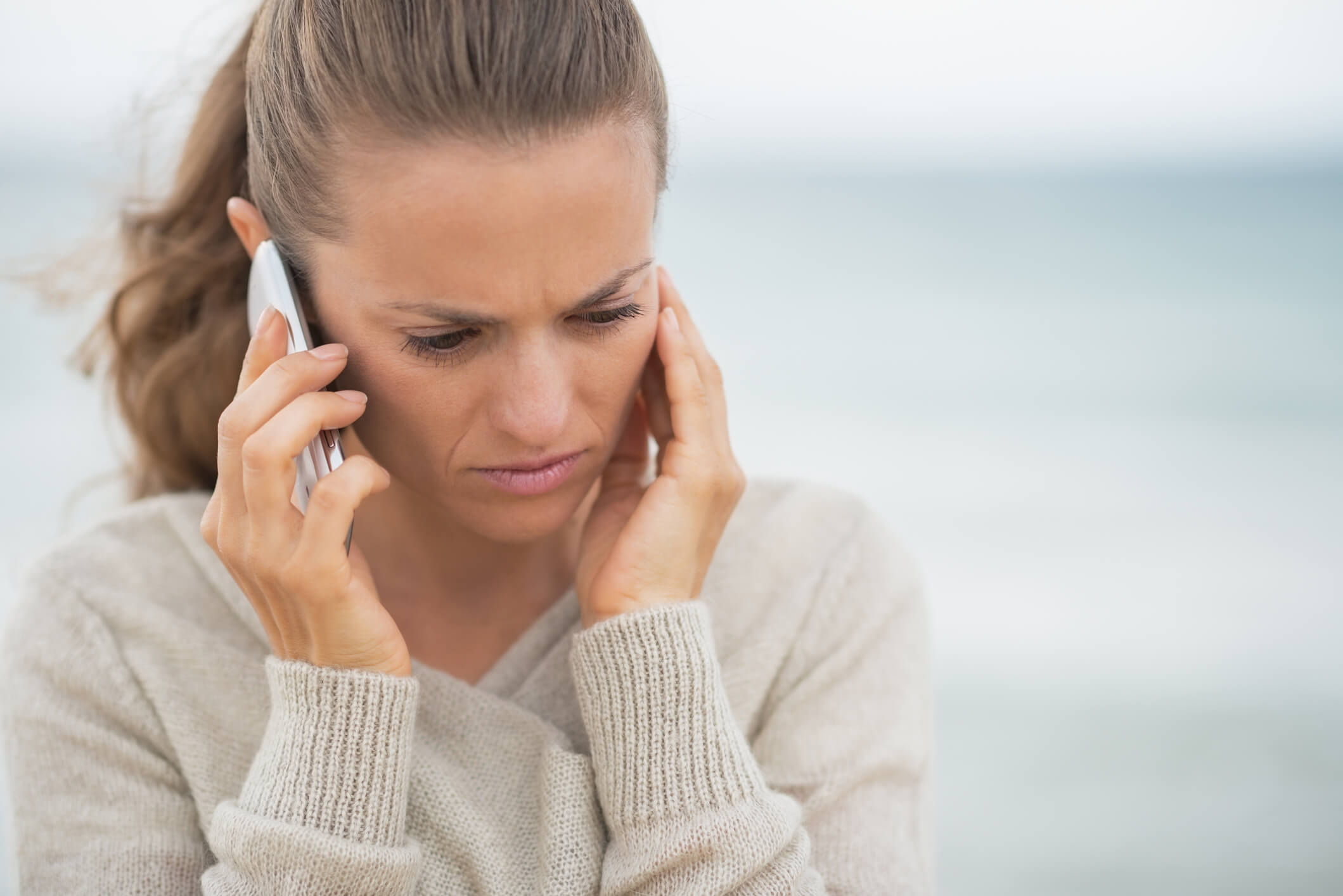
Contact an expert if you have any questions to make sure that you’re dealing with the situation properly.
For larger problems, the best option for dealing with mold is hiring a team of professionals to handle it. Your first decontamination teammate will be a mold inspector. This individual will go through the entire home, determine if that’s the only problematic area, figure out what led to the growth in the first place, and alert you to what contaminants are present including species of mold, mycotoxins, and/or bacteria.
With this information, a qualified remediation team will be able to come in and properly eliminate the contamination so that the home is once again safe for you and your family. A team with this priority in mind should ensure that its remediation protocol is based on three pillars.
These pillars include:
- Remediate the sources and mold properly
- Identify and resolve the problems that led to the sources in the first place
- Eradicate all contamination that exists from the mold problem, including mycotoxins and bacteria
If any of the boxes above aren’t checked off, the mold could grow right back or contaminants like dead mold or mycotoxins could be left behind, leading to prolonged exposure.
A Happy and Healthy Vacation
Jetting off for some fun times at the beach or lake should be a relaxing experience. Mold in a beach house or other waterfront property definitely puts a damper on what should be a great experience. That’s why increasing awareness of this indoor contaminant is so important.
Our indoor spaces have an enormous impact on our health. The safer and healthier these environments are, the more they’ll support our ongoing wellness. Plus, feeling unwell during your getaway time is never a good experience. Knowing how to spot a problem, handle it if it pops up, and prevent it from ever occurring can help keep these vacation places packed full of fun.
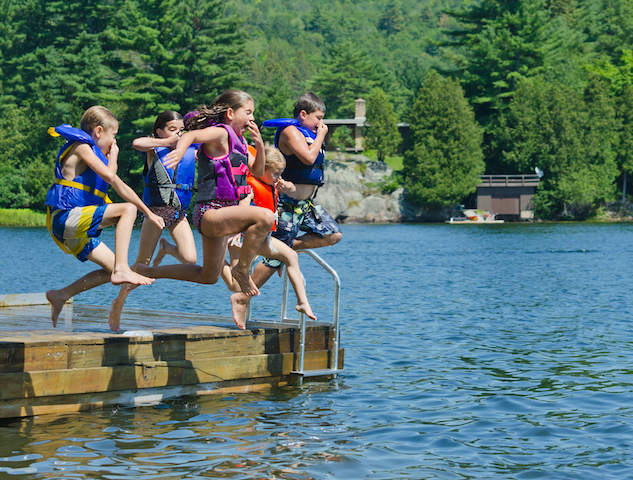
Citations: Environmental Protection Agency. (n.d.). What does mold smell like? EPA. Retrieved from https://www.epa.gov/mold/what-does-mold-smell.
- Environmental Protection Agency. (n.d.). Mold. EPA. Retrieved from https://www.epa.gov/mold.
- Centers for Disease Control and Prevention. Basic facts about mold and dampness. Centers for Disease Control and Prevention. Retrieved from https://www.cdc.gov/mold/faqs.htm.
- Lstiburek, J., Brennan, T., & Yost, N. (2002, January 15). Rr-0208: What you need to know about mold. Building Science Corporation. Retrieved from, https://www.buildingscience.com/documents/reports/rr-0208-what-you-need-to-know-about-mold/view.
- World Health Organization. (n.d.). Mycotoxins. World Health Organization. Retrieved from https://www.who.int/news-room/fact-sheets/detail/mycotoxins.
- Nchh. (n.d.). Mold. NCHH. Retrieved from https://nchh.org/information-and-evidence/learn-about-healthy-housing/health-hazards-prevention-and-solutions/mold/
- EPA. (n.d.). Health and Environmental Effects of Particulate Matter (PM). EPA. Retrieved from https://www.epa.gov/pm-pollution/health-and-environmental-effects-particulate-matter-pm.
- Curtis, L., Lieberman, A., Stark, M., Rea, W., & Vetter, M. (2004). Adverse health effects of indoor molds. Journal of Nutritional & Environmental Medicine, 14(3), 261-274.
- Bush, R. K., Portnoy, J. M., Saxon, A., Terr, A. I., & Wood, R. A. (2006). The medical effects of mold exposure. Journal of Allergy and Clinical Immunology, 117(2), 326-333
- Fisk, W. J., Lei-Gomez, Q., & Mendell, M. J. (2007). Meta-analyses of the associations of respiratory health effects with dampness and mold in homes. Indoor air, 17(4), 284-296.
- Wild, C. P., & Gong, Y. Y. (2010). Mycotoxins and human disease: a largely ignored global health issue. Carcinogenesis, 31(1), 71-82.
- Environmental and Occupational Health Assessment Program, & Environmental and Occupational Health Assessment Program, & Health Science Section, Mold Basics for Primary Care Clinicians (2009). Hartford, CT; Connecticut Department of Public Health. , H. S. S., Mold Basics for Primary Care Clinicians 1–10 (2009). Hartford, CT; Connecticut Department of Public Health.
- Environmental Protection Agency. (n.d.). What does mold smell like? EPA. Retrieved from https://www.epa.gov/mold/what-does-mold-smell.

